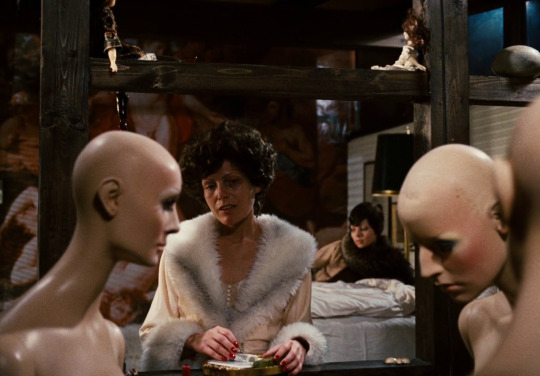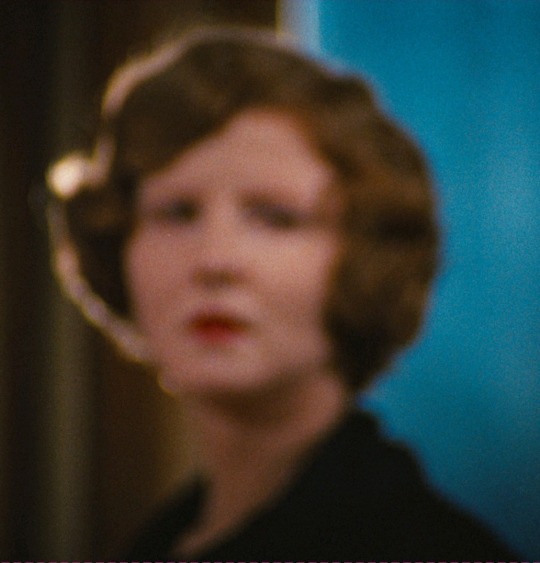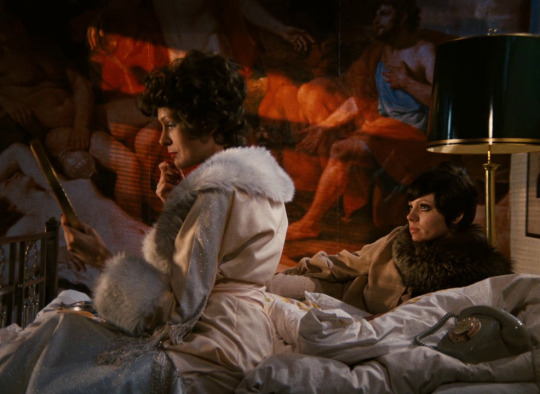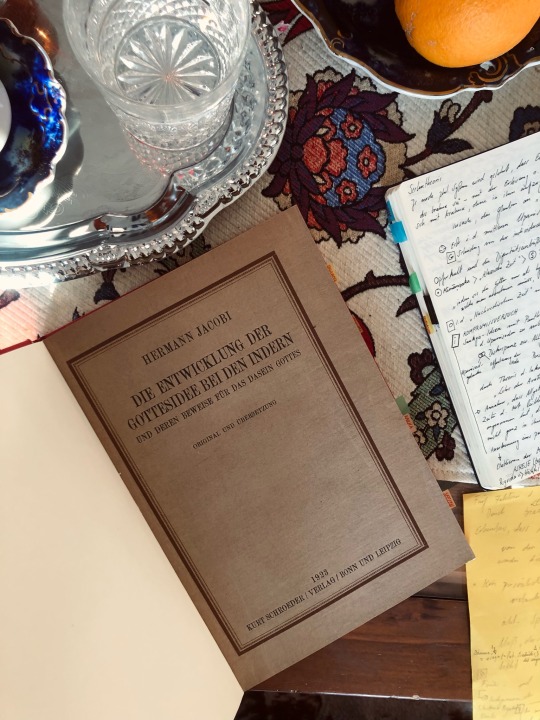#Hermann Kant
Text
Egon Krenz: Gestaltung und Veränderung. Erinnerungen. Rezension
Egon Krenz, einstiger Staatschef der DDR legt seine Memoiren vor. Meine Rezension zum ersten Teil seiner Memoiren unter dem Titel „Egon Krenz. Aufbruch und Aufstieg“ (»dass ein gutes Deutschland blühe«) leitete ich folgendermaßen ein:
„Menschen müssen immer auch im Kontext der Zeit verstanden werden, in welche sie hineingeboren und fortan aufgewachsen sind. Und auf welche Weise sie sozialisiert…

View On WordPress
#BRD#DDR#edition ost#Egon Krenz#erich honecker#Hermann Kant#Margot Honecker#michael gorbatschow#neues deutschland#Stephan Hermlin#Wolf Biermann
0 notes
Text










The Bitter Tears of Petra von Kant (1972) | dir. Rainer Werner Fassbinder
#the bitter tears of petra von kant#die bitteren tränen der petra von kant#rainer werner fassbinder#margit carstensen#irm hermann#hanna schygulla#eva mattes#gisela fackeldey#films#movies#cinematography#screencaps
149 notes
·
View notes
Photo





THE BITTER TEARS OF PETRA VON KANT (1972) dir. Rainer Werner Fassbinder
56 notes
·
View notes
Text









The Bitter Tears of Petra von Kant (Die bitteren Tränen der Petra von Kant) (1972) Rainer Werner Fassbinder
January 21st 2024
#the bitter tears of petra von kant#Die bitteren Tränen der Petra von Kant#1972#rainer werner fassbinder#margit carstensen#hanna schygulla#Irm Hermann#Katrin Schaake#eva mattes#Gisela Fackeldey#favourite#mubi
2 notes
·
View notes
Text
Matière à réflexion
Peinture de Montserrat Gudiol Plot 62
Il existe deux ensembles de principes. Les principes de pouvoir et de privilège et les principes de vérité et de justice. Si vous courez après le pouvoir et les privilèges, ce sera toujours au détriment de la vérité et de la justice.
Noam Chomsky
J’appelle un homme en éveil celui qui, de toute sa conscience, de toute sa raison, se connaît lui-même, avec…

View On WordPress
#Bouddha#Emmanuel Kant#Hermann Hesse#Inde#Matthieu Ricard#Montserrat Gudiol#Noam Chomsky#Sandrine Fillassier
0 notes
Text

https://youmustrememberthis.bandcamp.com/album/fade-into-you
1 note
·
View note
Text

Joy Division at Kant Kino Berlin 1980. Image : Hermann Vaske
#this searing light#Kant kino#charlottenburg#joy division#factory records#peter hook#hooky#stephen morris#bernard sumner#ian curtis#martin hannett#berlin#itsgrimupnorth#unknown pleasures#closer#still#tony wilson#rob gretton#here are the young men#love will tear us apart#transmission#atmosphere
458 notes
·
View notes
Text

Left, screen captures from Muscle, directed by Hisayasu Satô, 1989. Via. Right, photograph by Herbert List, Hands, violin, and bow of the king of waltz, Johann Strauss. From the series Panoptikum, Vienna, 1944.
While Signal, the dominant propaganda magazine of the Third Reich, focussed on delivering the Nazi ideological message, Tele turned to the cultural life of Europe. It was a magazine that would “employ softer tones… to promote sympathy for Germany,” that would show a selective appreciation of history, culture, and art.
It was a magazine that showed Germans in a flattering light, as people who appreciated music, art, and the finer things in life, people who, before the war, you might have sat next to during an orchestral performance, people whose not-so-hidden message was, ‘Perhaps we will one day do the same once all this nonsense is finished.’ The editorial policy of the magazine can be summed up as, ‘Let’s not talk about the war.’ Indeed, a picture from the magazine’s penultimate issue was captioned, ‘Let’s just not talk politics.’
That was how, early in 1944, List came to travel to Vienna to meet up with the editors of Tele (who had moved from Berlin due to ongoing air raids), says Richter. “There, he fell in love with the Panoptikum, and suggested that he wanted to do a photo essay on it.”
A waxworks museum in Vienna’s Prater Amusement Park, the Panoptikum was founded by Hermann Präuscher in the 19th century, and showed a variety of waxworks in a lurid mix of fame, horror, sex, murder and anatomical detail in equal measure.
List had photographed waxworks and catacombs earlier in his career. He had a surrealist fascination for the way the dead eyes and glossy skin of the waxworks were offset by their expressive faces and lifelike poses. Like photography itself, these figures had a surface you couldn’t quite get to grips with, and hidden depths which aroused a sense of unease and the uncanny in the viewer. They existed in a half-world between life and artifice, between fantasy and reality.
Colin Pantall, from Herbert List’s Panoptikum - Colin Pantall speaks to Peer-Olaf Richter, Director of the Herbert List Estate, about the strange and surreal "Panoptikum," a photobook that was first conceived in Vienna in 1944, and published 79 years later, in Magnum, September 29, 2023.
--
(...) the dream experience cannot be isolated from its content. Not because it may uncover secret inclinations, inadmissible desires, nor because it may release the whole flock of instincts, nor because it might, like Kant’s God, 'sound our hearts'; but because it restores the movement of freedom in its authentic meaning, showing how it establishes itself or alienates itself, how it constitutes itself as radical responsibility in the world, or how it forgets and abandons itself to its plunge into causality. The dream is that absolute exposure of the ethical content, the heart shown naked.
Michel Foucault, from Dream, Imagination, and Existence, 1954. In his first published text, Foucault discusses the subject matter of Traum und Existenz (Dream and Existence) by Ludwig Binswanger, 1930. Via.
7 notes
·
View notes
Text

44 years ago today, Joy Division performed at Kant Kino in Berlin. Made possible by Mark Reeder
Colour 📸 Hermann Vaske
21-Jan-1980
13 notes
·
View notes
Text
Grete Hermann (1901-1984)
"Thus the fact that we are able to control our thoughts and deeds reveals a connection between events other than the one of cause and effect. Our ability to base thought and action on certain grounds makes it possible for us to avoid mistakes, discover truth and create values, and thus escape being at the mercy of chance. There is no causal connection between events whereby without fail truth comes to light and that which is good is achieved. But the thinking, reasoning human being can work systematically to discover truth and bring about what he conceives to be good."
-- Grete Hermann
Grete Hermann was a German mathematician and philosopher whose work significantly impacted the foundations of quantum mechanics. She is most renowned for her early critique of John von Neumann's "no hidden-variables theorem," which argued against the possibility of hidden variables in quantum mechanics. Hermann demonstrated that von Neumann's proof was flawed, suggesting that quantum mechanics could accommodate deterministic interpretations through hidden variables. Hermann's philosophical approach was influenced by neo-Kantianism, and she aimed to reconcile Kantian causality with the probabilistic nature of quantum mechanics. She argued that quantum mechanics does not contradict the principle of causality but instead clarifies it by separating it from predictability. This perspective provided a new way of understanding causality in the context of quantum mechanics. Despite the significance of her work, Hermann's contributions were largely overlooked until the 1960s when her critique was rediscovered by physicist John Stewart Bell. This rediscovery highlighted her pioneering role in questioning the Copenhagen interpretation and paved the way for alternative theories like David Bohm's hidden variable theory. Hermann was actively involved in the Internationaler Sozialistischer Kampfbund (ISK), a socialist group that opposed the Nazi regime. Her political activities were grounded in the ethical principles she developed alongside Leonard Nelson, a neo-Kantian philosopher. Nelson's influence is evident in her efforts to apply philosophical ethics to political action, emphasizing the importance of moral values in resisting totalitarianism and promoting democracy. She believed in the necessity of integrating ethics into education and political practice. This is reflected in her work at the Landerziehungsheim Walkemühle, an educational institution founded by Nelson, where she contributed to developing a curriculum that combined ethical instruction with academic learning. Hermann's ideas on these subjects were influential in shaping post-war German social democracy. Her collaboration with Minna Specht further illustrates her commitment to these themes.
Elise Crull: Grete Hermann's Interpretation of Quantum Mechanics (Harvard Foundations of Physics, November 2020)
youtube
Note: Transcendental structuralism in physics is an approach that integrates elements of Kantian transcendental idealism with structuralism, offering an alternative to structural realism. This perspective suggests that knowledge in physics is fundamentally about the relationships between phenomena, rather than about the intrinsic properties of entities themselves. Transcendental structuralism posits that structures are not just part of the objective world but are essential epistemic conditions arising from the subject. This contrasts with epistemic structural realism (ESR), which views structures as part of the world independent of us. Transcendental structuralism emphasizes that our understanding of the world is mediated by the structures inherent in our cognitive framework, aligning with Kant's idea that space and time are forms of intuition that shape our experience of objects. Jean-Louis Destouches, an early proponent, applied this approach to quantum mechanics, arguing that quantum phenomena are relative to experimental contexts, and thus, physical theories provide interconnected predictions rather than descriptions of reality. This view aligns with the broader transcendental philosophy, which seeks to understand the conditions that make scientific knowledge possible, especially in the context of quantum mechanics.
Wednesday, September 11, 2024
5 notes
·
View notes
Note
Hey, do you have any book recommendations base on what enneagram would most likely relate to? I think you have...? maybe, but that also leads to my other question: how would each enneagram write a book? like the language, voice, and conflicts that they would most likely write about
Oh yes, I made a booklist for each Enneagram type on my IG but I'll list here the ones I think that represent the most each Enneatype essence (it's not necessary for the main character to have that enneagram type).
Type One: The Republic by Plato | Crime and Punishment by Dostoyevski
Type Two: Cupid and Pysches, Metamorphosis by Hegel | Emma by Jane Austen
Type Three: The Portrait of Dorian Gray by Oscar Wilde | The Prince by Machiavelli
Type Four: Demian by Hermann Hesse | No Longer Human by Osamu Dazai
Type Five: Notes from the Underground by Dostoyevski | The Steppenwolf by Hermann Hesse
Type Six: 1984 by George Orwell | Critique Of The Power Of Judgment by Immanuel Kant
Type Seven: The Hitchhiker's Guide to the Galaxy by Douglas Adams | A Confederacy of Dunces by John Kennedy Toole
Type Eight: Six of Crows by Leigh Bardugo | The Art of Controversy by Schopenhauer
Type Nine: The Stranger by Albert Camus | Ulysses by James Joyce
You can see the common theme in all of them that reflects the main struggle of each type, as well as its cognitive distortions and the lies of the ego. I think that the language of the writer gets more influenced by the cognitive functions than by the Enneagram type, although you'll find some common grounds based on the triads.
19 notes
·
View notes
Photo

Brigitte Mira. Irm Hermann. Ingrid Caven. Hanna Schygulla. Barbara Valentin. Rosel Zech. Barbara Sukowa. Christiane Maybach. In the 1970s turbulent New German Cinema visionary Rainer Werner Fassbinder worked with - and elicited career-best performances from - the crème de la crème of German actresses. Even in that illustrious company, Margit Carstensen (29 February 1940 – 1 June 2023) - who has died aged 83 - was exceptional. Fassbinder’s camera devoured the planes and hollows of Carstensen’s remarkable face, and she’s particularly spellbinding in The Bitter Tears of Petra Von Kant (1972), Martha (1974) and especially Fear of Fear (1975), one of the definitive “women-having-a-breakdown” movies (see also: Monica Vitti in Antonioni’s Red Desert (1964)).
#margit carstensen#rainer werner fassbinder#rw fassbinder#r w fassbinder#new german cinema#german actress#european art cinema#lobotomy room#fear of fear
17 notes
·
View notes
Text










The Bitter Tears of Petra von Kant (1972) | dir. Rainer Werner Fassbinder
#the bitter tears of petra von kant#die bitteren tränen der petra von kant#rainer werner fassbinder#margit carstensen#irm hermann#hanna schygulla#eva mattes#gisela fackeldey#films#movies#cinematography#screencaps
131 notes
·
View notes
Text
How the Idea of God developed in Ancient India and their proofs of the Existence of God



From the series Theological Theories of the Orient -
A highly informative, mentally overwhelming, spiritual overloading and awe-inspiring work: "The Progress of The Idea of God by the Indians and their Evidences for the Existence of God" written by the Altmeister of Indology Prof. Hermann Jacobi in 1923, published by W. Kirfel, who was the student and later successor of Jacobi's professorial chair.
This edition also includes "The Philosophy of Madhvachaya" by Prof. Helmuth von Glasenapp, who's work is still used as standard reference for Sanskrit studies (even in India) and he also undertook the philosophical systems of Herder and Kant for a comparative analysis in consideration of Indian philosophy.

Thousand years of spuculation and theories, abstract ideas and deep timeless wisdom -
Diving into Hindu cosmogony is a mental journey that must advance to a life task, when the reader is truely devoted.
So a little forewarning that this post has no aim for completeness:
Just consider the wealth of thousand years of speculation and the literal sense of all those holy books and comments. But I do not need to reproduce what was consolidated so adequate by passionated Professors of Indology, as I can say for myself, as a lay(wo)man :')

"What the finest is, of this the Cosmos is made, this is satyam, this is atman, this is you (tut twam asi)."

Prof. Jacobi has the aim to analyize the six orthodox systems of Hinduism in focul point of describing how the idea of God, respectively the belief in monotheism, evolved in Ancient India.
The analysis is examined in philosophical speculation and is not including the religious side of this contemplation.
The great folk religions arised at the end of the Vedic period (~800 before our time) till 4th century.
The idea of the Divine has undergone many transformations.
Kathenotheism
(Coined by Schelling, καθ’ ἕνα [kath’ héna, “one by one] + θεός [theós, “god”, believing in the existence of multiple Deities and that different deities are supreme at different times, depending on circumstances, but their autarchy were denied]
is defined as a preliminary stage of monotheism, having its roots in sacrificial rituals and the interpretational demand to lightening up every part of the ritus:
Because in the ritual of sacrifice everything and all is relevant, so they were considered as symbols, refering to a being "behind" the symbol,
this is called brahma. With this idea, the concept of atman aroused,
adding more metaphysical content (yes, there are upgrades possible :') ...) to the concept of the sacrificial cult.

"But he, who is the atman (=brahma) ist not like this and not like that, he is intagible (...), he is not connected, he is not shaking, he does not get harmed."

The whole sincerity in sacrificial exegesis, established a scientific claim and the main concern of the interpretation of symbolistic means, resulting in bringing the period of Brahmana forth.
By giving the act of sacrifice an higher value than the cult of the Divine, consquently the lower assessment of the Deities had to lead to the loss of their significance.
The Brahmanical system is consistently pursueing to expand their knowledge in symbolic meanings, but the majority of Ancient Indian population was still believing in other forms of native primitive religion.
(Side note: What makes a belief more primitive than the other(s)? In my opinion it is the complextity of the cosmogony defined and the treatises of theodicy. Comments and discussions over centuries, showing the dialectic process behind theories...)
The search for the real, the truth (~ satyam), behind the appearance, strenghtened the will (in Indian parlance the "will" is always connected with the realization) for seeking methods of epistemology.
Also the ideal of the Absolute, the Highest, the idea of this "something", which is standing above the world, is deeply interwoven in the nature of the human reason.
The Ancient Indians searched for other ways for religious practice, without the help of the old Deities, finding a compromise between the thoughts of the Upanishads plus the revelations and the obligations in sacrifice of the Vedas.
What a huge cultural and pychological evolution it meant for the progress of cognitive skills to reduce all phenomena as cosmic illusions, to target all roots to the One and First Cause (exciting how the Sankya ideas were combined with the Pantheism of the Upanishad) and how the definition or separation of soul (the meaning changed within the decades, traces of the old definition can be found in the Buddhism) and substance evolved the question, how the Prime Matter (pradhana or prakrti) is composed.
It is very interesting how the principle of Karma, also originates in the cult of sacrifices: After a sacrfice, the time till the request will be recognized is called karman.
Every action of the earthly ones is influenced by a natural and preternatural "something", which is called Karma.
In the common view, Karma adheres to the soul, till it is completelty consumed (Samsara - The circle of life, the world of becoming and elapsing through liberation -> Nirvana).

It would massively expand my capacity in every way to present my notices in a logical order, but I will try to draw some graphs and present different cosmological and ontological systems in English.
Still working on my notices, but will never “complete” these joyful studies of metaphysical theories in seventy lifetimes 🥲💙💙💙💙💙💙💙💙💙💙💙💙💙💙💙💙 and this is a wonderful good reason to stay alive for a little while 🦋🥰

#Ancient Indian#Indology#the Vedas#the Upanishad#cosmology#ontology#philosophy#metaphysical studies#antiquarian book#books#philosophical books#Hermann Jacobi#Helmuth von Glasenapp#Hinduism
2 notes
·
View notes
Text
Visual novels are actually the most autistic and thus best form of media ever invented because they are the only form of fiction in which you can reasonably expect to see kinky sex involving cute moe catgirls interspersed between strikingly nuanced takes on Kant’s approach to philosophy as interpreted through the works of Hermann Hesse and complex subatomic theoretical physics.
2 notes
·
View notes
Text
In Kant’s point of departure, the existence of objective science, Peirce zoomed in on the undoubtable existence of true propositions. Here, he paralleled the neo[1]Kantian movement developing in Germany at the same time, which had an early culmination in Hermann Cohen’s dictum: “It still seems so needed today, that content of the transcendental method: experience is the given; and it is to dis[1]cover the conditions on which its possibility is founded”.¹⁷³ Experience as a fact is the given, whose conditions of possibility philosophy must uncover in order to account for how objective knowledge of reality is possible. Later, Cohen famously summed up this idea as beginning from “the fact of science”.¹⁷⁴ To Peirce the neo-Kantian, this fact consisted in the undoubted existence of true propositions:”.… a realist is simply one who knows no more recondite reality than that which is represented in a true representation” (“Some Consequences of Four Incapacities”, 1868, EP I, 53; CP 5.312).
Frederik Stjernfelt, Sheets, Diagrams, and Realism in Peirce
4 notes
·
View notes